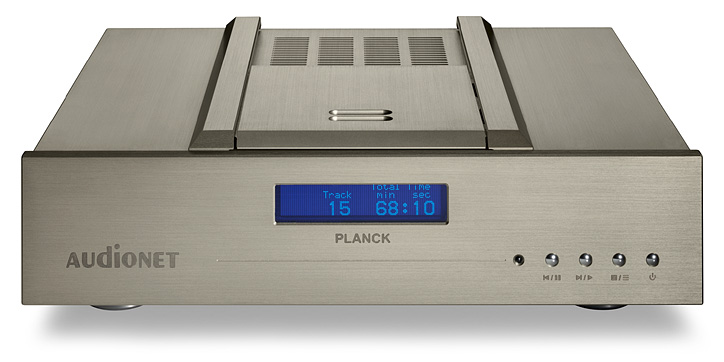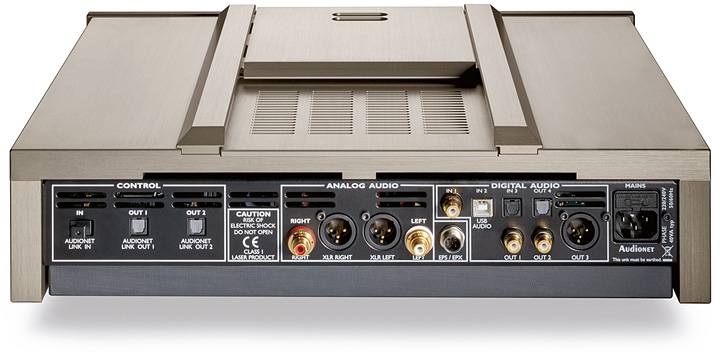
Big shoes to fill: Audionet’s CD player ART G3 has been enthusiastically reviewed in the international press and achieved numerous awards. Many audiophiles consider it as the benchmark, and actually the machine also represented state of the art for Audionet, too. However, at the Munich high-end show, which for the manufacture was a kind of taking breath in between packing their bags in Bochum, Audionet introduced the new CD player Planck. The relocation of their headquarters to the German capitol city is not much of a surprise; much less is the commitment to the compact disc, even regarding their own advances towards network audio. After all the CD has occupied an important place in audiophile’s shelfs over three decades and doesn’t seem to vacate this pole position soon. Moreover CDs still have the largest market share in many countries, despite the increasing significance of high resolution files. In contrast the launch of a new CD player was indeed a bit surprising, given how sophisticated the third generation ART is. Obviously when proclaiming the ART G3 to be Audionet’s final statement at the time of it’s rollout, they referred not to CD reproduction itself being maxed out, but rather to the device concept.
By optimizing the slightest details one can achieve major leads compared with previous model versions, yet sometimes the continuous R&D process requires to make a bigger step. Apparently, for Audionet it had been about time for nothing less but a quantum leap. Consequently the Planck, together with it’s teammates from the brand new scientist series, is part of a large-scale project which fully reflects Audionet’s current technological potential. Sidewards to the CD player there is the integrated amplifier Watt and the external power supply Ampere, which is not intended for the Watt or for both the amplifier and the source. Instead, the Ampere was created exclusively to perfect the player by feeding it’s analogue stages. If the ampere is capable of effecting such an amazing performance gain like the EPX does with the ART G3, remains to be seen. This time, it is all about the Planck, just the way it comes - that alone promises to be a juicy matter.
From an aesthetic point of view one might look upon the Planck as a wary, yet impactful modification of the ART-design. The clear shaping of the case as well as the tidy front side with the proven four-button-approach are familiar parts of its appearance; just like the excellent vacuum fluorescence display, which is clearly readable also from a certain distance. Concerning the finish Audionet dared to make a bold step for the first time: the anodised aluminium parts are available in the colour »light bronze« only. An appealing choice no doubt, as this tone appears classy and shimmers in slightly different nuances, depending on the light incidence. And a wise one too, since there is no accounting for taste, but for design quality: this colour scheme stands out pleasingly from the widespread alternatives to black, like silver or champagne.

